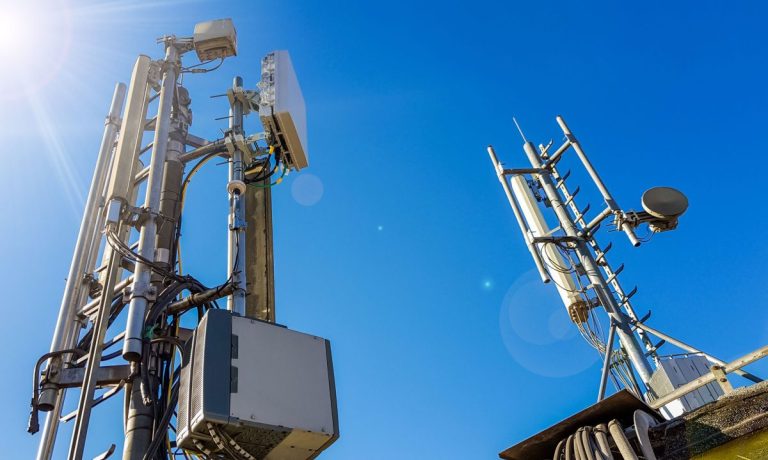A rollout that’s been plagued by fits and starts.
This, as The Wall Street Journal (WSJ) relayed Monday (Feb. 27) that Swedish telecom equipment company Ericsson is cutting 8,500 roles, or around 8% of its workforce, in part due to the stalled rollout of its 5G wireless service and infrastructure.
The fifth-generation technology standard for broadband cellular networks has only recently begun to shift from a future-fit, tomorrow technology to a valuable, viable high-speed foundation of connectivity for businesses and consumers alike today.
And 5G network adoption still has a ways to go.
Ericsson leadership has also warned that Europe’s own industry structure is itself likely unsustainable.
Advertisement: Scroll to Continue
“The big problem in Europe is really that our customers can simply not afford to build out the networks and I think that is going to hurt European competitiveness long term,” Ericsson CEO Börje Ekholm said recently at this month’s 2023 Mobile World Congress (MWC) in Barcelona, Spain.
Read more: Tomorrow’s Most Important B2B Investment Is Usable Digital Infrastructure
As PYMNTS previously reported, the European Commission is currently in the midst of determining who should ultimately be responsible for footing the bill for an upgrade of Europe’s telecom system — with the bloc’s telecoms arguing that the world’s biggest tech giants, including Meta, Google, Apple and Amazon should cover at least a portion of the cost, given that their platforms and user base account for more than half of the region’s internet traffic volumes.
The tech companies, for their part, have objected to the idea that they should be responsible for the infrastructure upgrades, without denying the need for them.
The premise of 5G connectivity is to serve as one of the technical pillars supporting tomorrow’s ever-more connected and digital-first world by enabling better insights, improved productivity levels, accelerated use of automation, better application performance, and the ability for hyper-rapid transaction settlements and other digital payment advances that can remove historical frictions while supporting growth.
PYMNTS has noted in the past how the broadband network has been heralded as the first generation of mobile technology whose applications may have a bigger impact on businesses than on consumers.
Part of that reason could be because for consumers, 5G hasn’t really begun to move the needle yet.
Bridging the Digital Divide With Next-Gen Broadband Speeds
PYMNTS research in “The ConnectedEconomy™ Monthly Report: Digitally Divided — Work, Health and the Income Gap” has identified and measured a sharp divide between how much consumers in different income brackets used the internet in their daily lives, with high-income consumers consistently more likely than low-income cohorts to use digital tools for everything from traveling to banking, keeping in touch with their families, accessing healthcare and beyond.
There is also a growing divide between modern and legacy businesses and the abilities of their own operational architectures to adapt to today’s digital-first behavioral environment and challenging macroclimate.
British telecom company Vodafone sees a white space opportunity in making sure that the more than 22 million small and medium-sized businesses (SMBs) across Europe don’t get left behind as corporate giants start to throw their hyperconnected weight around.
Vodafone last Monday (Feb. 20) announced a prototype 5G network that leverages the Raspberry Pi project’s credit-card sized Raspberry Pi 4 personal computer to offer households and small businesses extended 5G coverage and ensure they are able to take advantage of the broadband network’s faster speeds, lower latency, and higher bandwidth without needing to completely revamp their existing operational architecture.
In North America, Verizon Business and KPMG LLP have joined forces to develop a suite of 5G-powered solutions and use cases geared toward enabling seamless, reliable, and secure communications across the healthcare industry.
The joint venture Healthcare Lab will tap 5G connectivity to support investigations into innovative artificial intelligence (AI) and computer vision imaging analysis, AR/VR for surgery planning, the enablement of sustainable buildings, and further uses of next-generation technology to bridge the health equity gap.
“5G has the power to transform industries and will become the backbone for communications for the future,” Verizon KPMG LLP Lead Partner Fiona Grandi said in a release announcing the partnership last Thursday (Feb. 23).
“The future of healthcare will increasingly involve digital technologies and solutions designed to transform the healthcare industry by providing a streamlined patient/provider experience and ultimately improving patient outcomes,” added KPMG’s Greg Corlis.
For all the good work being done, it remains to be seen whether the promise of interoperable digital advances can grow into a modernized ecosystem that benefits all stakeholders.

